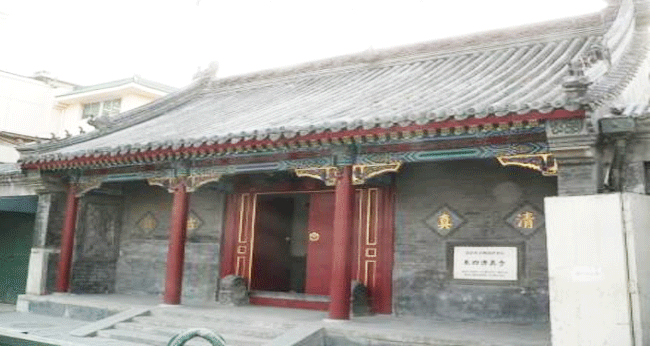History of Islam in China
The roots of Islam in China can be traced to 650 CE during the Tang
Dynasty (618 – 907), only eighteen years after the death of Prophet
Muhammed. The third caliph of Islam, Uthman Ibn Affan had sent an envoy
led by Sa’d Ibn Abi Waqqas, the maternal uncle of Prophet Muhammed to
invite Emperor Gaozong (also known as Yung Wei in some sources) to
embrace Islam. The emperor held Islamic teachings in high regard due to
many similarities with the teachings of Confucius. Showing further
respect the emperor allowed the establishment of the first mosque in
China, which was the Huaisheng Mosque.
With the spread of Islam, more mosques in Beijing had being built so
that Muslims in Beijing could practice their faith. Muslims who travel
to China simply have to visit these 5 mosques in Beijing at least once,
as each mosque has their own rich history and reflects another period in
time.
1. Niujie Mosque

The Niuje Mosque was built in 996 during the Liao Dyansty, and is
situated in Ox Street in the Xicheng District (previously the Xuanwu
district). This is the one of the largest and oldest mosques in Beijing.
The Niujie mosque is built from timber and covers 6000 square metres
with a main prayer hall covering 600 square metres. The construction is
influenced by both Islamic and Han architecture, which makes the
exterior resemble a Buddhist temple. The interior sections are decorated
with Islamic calligraphy and Chinese writings too. If you are looking
for Halal food in Beijing, Ox Street has a selection of street food and
restaurants unique to the Muslim community in China.
2. Dongsi Mosque

This mosque was built during the Yuan Dynasty in 1356 and is located
in Dongsi Street in the Dongcheng District. The Beijing Dongshi Mosque
is one of the oldest mosques in Beijing as well and is the headquarters
of the Islamic Association of Beijing. The library is located in the
southern wing and contains different versions of the Quran including
many other valuable manuscripts. The prayer facilities include a main
prayer hall large enough to hold 500 people and separate area for women.
3. Madian Mosque

The Madian mosque located in the Madian South Village in the Haidian
District covers 3800 square metres and is constructed in the style of a
traditional Chinese courtyard. It was built during the Qing Dynasty by
Emperor Kangxi in 1662 for the Hui Muslim community, the Madian area is
still one the largest communities of Muslims in Beijing. This mosque is
complete with a prayer hall, teaching halls and a hall for women.
4. Changying Mosque

Located in the Chaoyang district, this mosque is named after the
village of Changying where it is situated. It was built in the Zhenge
period during the Ming Dynasty and is one of the largest mosques in
Beijing situated in a suburban area. There is a separate prayer hall for
women too.
5. Jinshifang Street Mosque

The Jinshifang Street Mosque was built during the reign of emperor
Xuande during the Ming Dynasty. The architecture of the mosque resembles
a classic Chinese palace of the Ming Dynasty style and is considered
one of the four most important mosques in Beijing. It covers a total of
1,533 square metres. There are 150 volumes of Arabic classics and 100
volumes of Persian classics preserved here. This mosque is the centre
for the Islamic Association of Xicheng District.
Source .. https://www.halaltrip.com/
Source .. https://www.halaltrip.com/

No comments:
Post a Comment